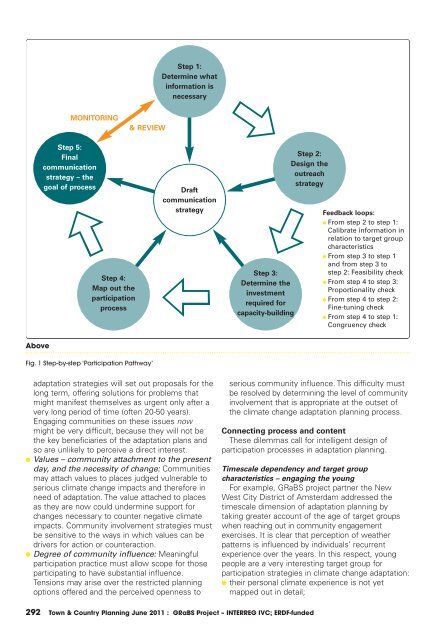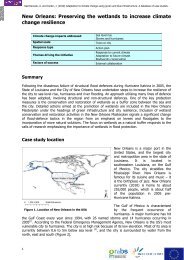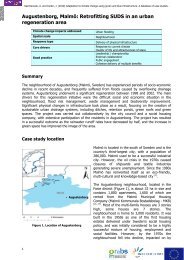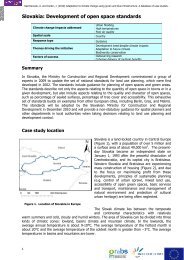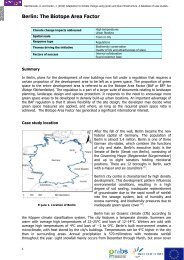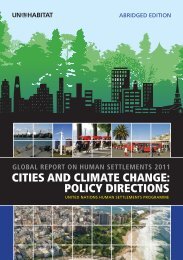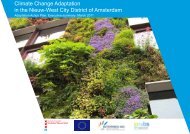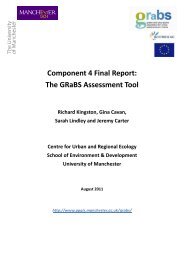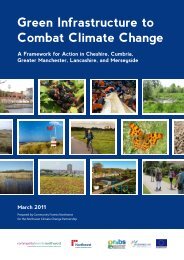Download - GRaBS
Download - GRaBS
Download - GRaBS
Create successful ePaper yourself
Turn your PDF publications into a flip-book with our unique Google optimized e-Paper software.
Step 1:<br />
Determine what<br />
information is<br />
necessary<br />
MONITORING<br />
& REVIEW<br />
Step 5:<br />
Final<br />
communication<br />
strategy – the<br />
goal of process<br />
Step 4:<br />
Map out the<br />
participation<br />
process<br />
Draft<br />
communication<br />
strategy<br />
Step 3:<br />
Determine the<br />
investment<br />
required for<br />
capacity-building<br />
Step 2:<br />
Design the<br />
outreach<br />
strategy<br />
Feedback loops:<br />
● From step 2 to step 1:<br />
Calibrate information in<br />
relation to target group<br />
characteristics<br />
● From step 3 to step 1<br />
and from step 3 to<br />
step 2: Feasibility check<br />
● From step 4 to step 3:<br />
Proportionality check<br />
● From step 4 to step 2:<br />
Fine-tuning check<br />
● From step 4 to step 1:<br />
Congruency check<br />
Above<br />
Fig. 1 Step-by-step ‘Participation Pathway’<br />
adaptation strategies will set out proposals for the<br />
long term, offering solutions for problems that<br />
might manifest themselves as urgent only after a<br />
very long period of time (often 20-50 years).<br />
Engaging communities on these issues now<br />
might be very difficult, because they will not be<br />
the key beneficiaries of the adaptation plans and<br />
so are unlikely to perceive a direct interest.<br />
● Values – community attachment to the present<br />
day, and the necessity of change: Communities<br />
may attach values to places judged vulnerable to<br />
serious climate change impacts and therefore in<br />
need of adaptation. The value attached to places<br />
as they are now could undermine support for<br />
changes necessary to counter negative climate<br />
impacts. Community involvement strategies must<br />
be sensitive to the ways in which values can be<br />
drivers for action or counteraction.<br />
● Degree of community influence: Meaningful<br />
participation practice must allow scope for those<br />
participating to have substantial influence.<br />
Tensions may arise over the restricted planning<br />
options offered and the perceived openness to<br />
serious community influence. This difficulty must<br />
be resolved by determining the level of community<br />
involvement that is appropriate at the outset of<br />
the climate change adaptation planning process.<br />
Connecting process and content<br />
These dilemmas call for intelligent design of<br />
participation processes in adaptation planning.<br />
Timescale dependency and target group<br />
characteristics – engaging the young<br />
For example, <strong>GRaBS</strong> project partner the New<br />
West City District of Amsterdam addressed the<br />
timescale dimension of adaptation planning by<br />
taking greater account of the age of target groups<br />
when reaching out in community engagement<br />
exercises. It is clear that perception of weather<br />
patterns is influenced by individuals’ recurrent<br />
experience over the years. In this respect, young<br />
people are a very interesting target group for<br />
participation strategies in climate change adaptation:<br />
● their personal climate experience is not yet<br />
mapped out in detail;<br />
292 Town & Country Planning June 2011 : <strong>GRaBS</strong> Project – INTERREG IVC; ERDF-funded


